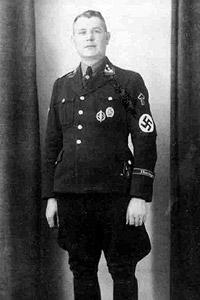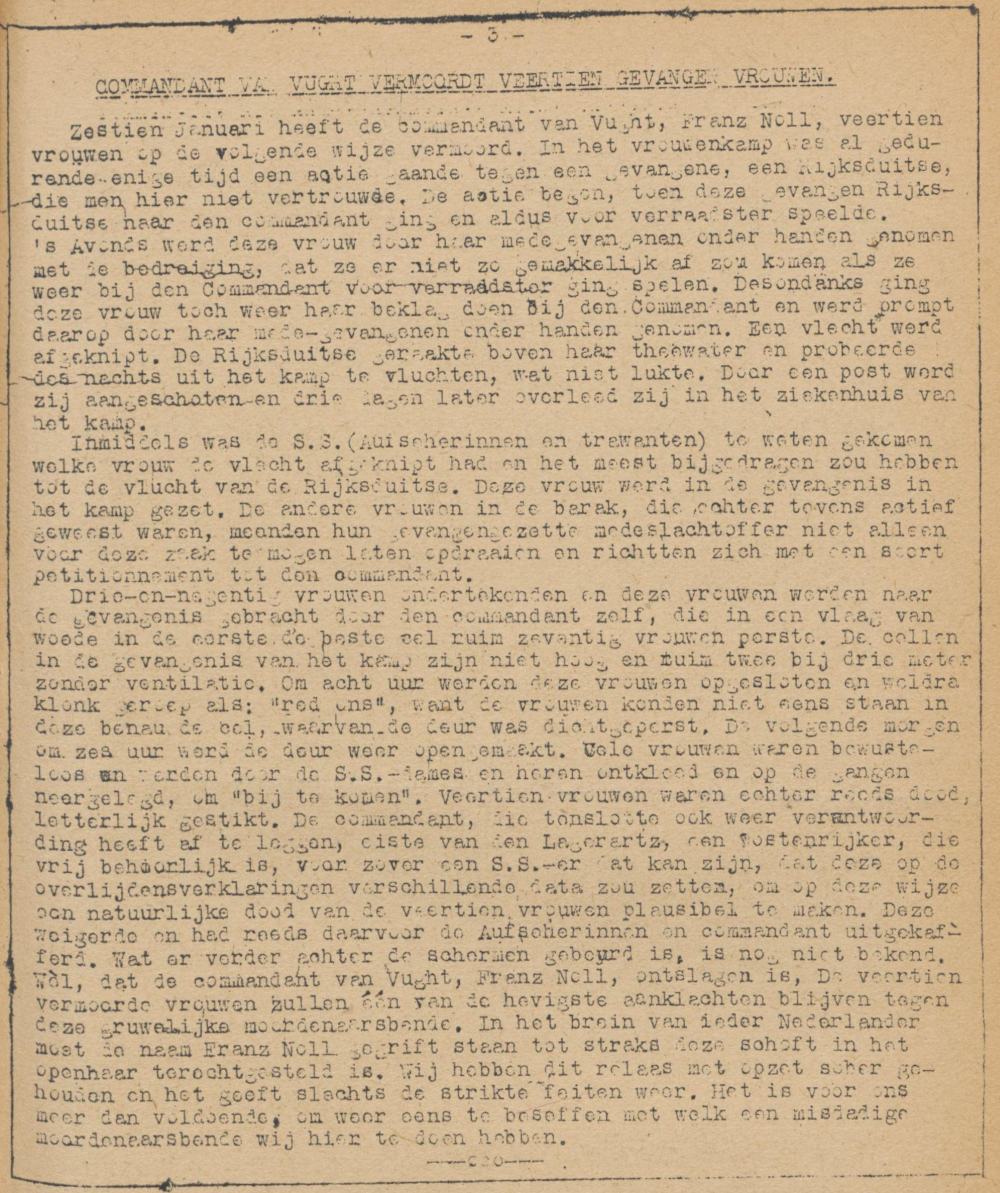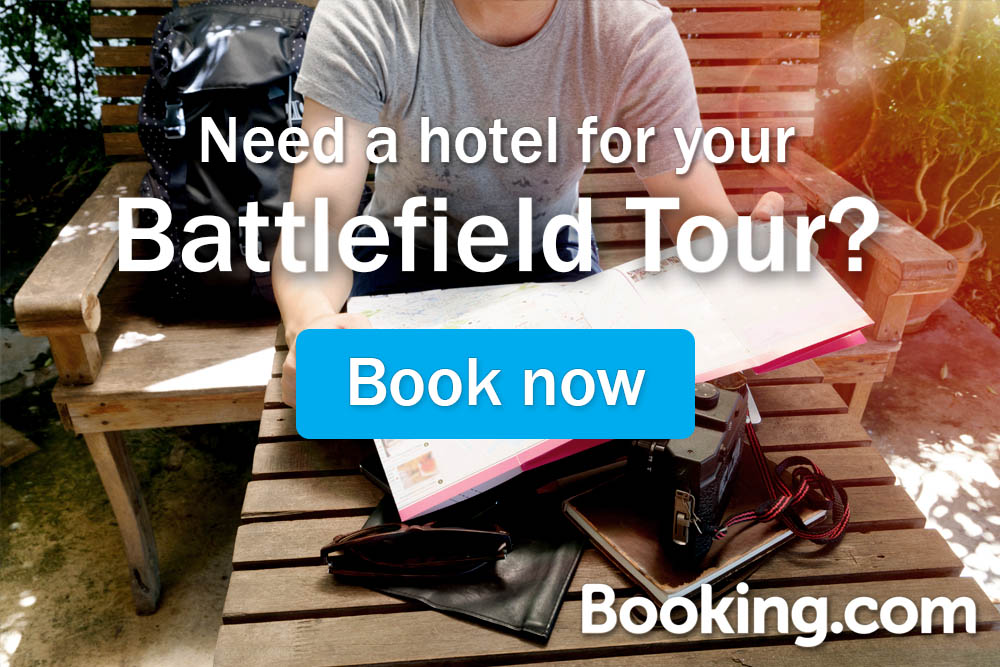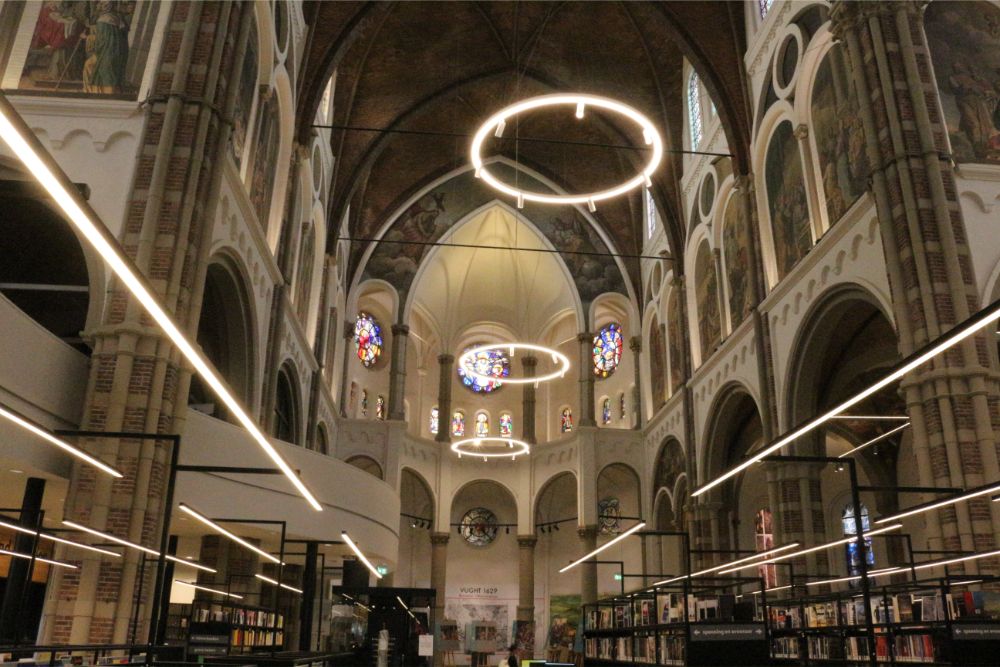Bunker tragedy at concentration camp Vught
Introduction
The Bunker tragedy happened in the night of 15th - 16th January 1944 at concentration camp Vught in the Netherlands. Under the authority of camp commander Adam Grünewald 74 female prisoners were detained in a cell after they protested against the interment of a fellow prisoner. The room with the surface of 9 m² had a poor ventilation system, and because of that ten women died of suffocation during the imprisonment. The news of this tragedy quickly got outside the camp and was extensively described by the Dutch illegal press. This was a thorn in the flesh of Nazi leadership in the Netherlands, which was trying to limit such violent incidents in the model camp in order not to fuel the resistance in the Netherlands.
The Vught model camp
The Vught camp, built in 1942, was the only one in the Netherlands that was set up according to the model of concentration camps in Germany. The first prisoners arrived in January 1943, and as a result of miserable living conditions, the most victims fell during the first months. In total, between January 1943 and September 1944, more than 31,000 people were detained for a shorter or longer period of time. Among these prisoners approximately 12,000 were Jews, who were deported from the camp, mostly via the transit camp Westerbork, to the extermination camps in Poland.
In total, 421 prisoners died in the camp from hunger, illnesses and abuse. At the execution site outside the camp 329 prisoners were shot. Compared to the concentration camps in Germany and Poland however, the mortality rate was low. The German occupation administration in the Netherlands, led by Reich Commissioner Arthur Seyss-Inquart, assisted by the Senior SS and Police leader Hanns Rauter, considered camp Vught to be a model camp. Its relatively less hard regime and the avoidance of excesses would prevent the resistance of Dutch against the presence of the camp.[1]
"The political relations in the Netherlands require […] a special sensibility because incidents in the camp cannot stay hidden from the outside world as well", so determined the court dealing with the lawsuit against Grünewald. The Dutch camp guards were among the people who provided society with information about incidents in the camp. This information "could be used in the extraordinary way by the enemy propaganda, which "could significantly disrupt the aspirations of Reich Commissioner in the Netherlands." They pointed Grünewald to "the particularity of the political situation in the Netherlands and the consequences for him" before he was appointed as a camp commander.[2] But in spite of these warnings things went incredibly wrong during the night of 15th to 16th of January 1944.
Detention in the Bunker
Right before the Bunker tragedy a quarrel took place at the female department of the camp. One of the female prisoners in barrack 23 was blamed by other women of betrayal, and finally they cut her hair to punish her. The next day the main culprit was locked up by the camp leadership in a cell in the camp prison, the Bunker. She refused to tell the names of the other women who were involved in the quarrel. The women of the 23rd barrack decided to declare their solidarity with her and all declared guilty in expectation to lighten the punishment of their detained fellow prisoner. That was a fatal miscalculation, because Grünewald took the women's solidarity action as mutiny and decided to take very hard measures. On the 15th of January he let round up all the women and, under the encouragement of SS-Obersturmführer Hermann Wicklein, lock them in two cells in the Bunker. They crammed 74 women into cell 115, while the remaining 17 were detained in the cell 117 nearby.
Generally speaking, the cell where 74 women spent the night, was meant to hold two or three prisoners. On the area of tight 9 m² the women were forced to stand pressed against each other with no possibility to lie down. The ventilation was very poor.[3] Tineke Wibaut survived the tragedy. She could remember when the panic broke out "at its worst" when the lights in the closed cell went down:
"There was a strange, increasing sound falling and rising back from time to time. It was produced by bidding, crying and screaming women. Some women tried to call through the noise to calm others down and waste no oxygen. Sometimes it would work, but for a very short time, and then it started again. It never stopped, not even in the night, it just got less loud. The heat was stifling."[4]
Ten dead
The next day around 07.00 the doors of the cell 115 went open. Some women could leave the cell by themselves, while others remained motionless on the floor. The bodies were carried out of the cell. The rushed camp doctor was still able to save twenty unconscious victims, but ten others didn't survive the night. On the 21st of January the camp doctor carried out an autopsy on the bodies, supported by two doctors of the Luftwaffe. The doctors concluded that because of the long standing the blood had flowed away from the upper body parts of the women resulting in unconsciousness. In addition, they meant, the panic stimulated the increased use of the oxygen, which couldn't be replenished due to the lack of air supply.[5]

Adam Grünewald, commander of Vught camp. Primarily responsible for the Bunker tragedy. Source: www.philips-kommando.nl
Grünewald wanted to blame the women themselves and tried to cover up the incident by falsifying the death records. Though he forbade to talk about the death of the women, two of his staff members reported the incident to the Sicherheitsdienst in the Hague. On the 24th of January Grünewald was summoned to Rauter to make a report.[6] This report made by the camp commander and his colleagues lacked cohesion: the exact number of dead was concealed, as was the fact that Grünewald had forbidden to open the small windows of the cell for sufficient oxygen supply. The report also stated that the cell were "relatively large and spacious".[7] Rauter, however, wouldn't let make a fool of himself and would get furious about the Grünewald's behavior. A close coworker of the Higher SS- and Policeleader stated: "He [Rauter] was scandalized about so much inhumanity and called Grünewald a beast that should have been locked."[8]
Rauter informed Himmler's staff about the incident. The issue was apparently taken so seriously that on the 3rd of February the Reichsführer-SS made a personal visit to the camp. The fear that the incident would get out to the Dutch population became reality on the 15th of February, when the newspaper Vrij Nederland (Free Netherlands. Translator's note) as the first illegal newspaper reported about what had happened. Other underground newspapers would also write about it later. On the 21st of February Grünewald got fired from his position as commander and replaced by the SS-Sturmbannführer Hans Hüttig.

An article from the illegal newspaper De Waarheid (The Truth. Translator's note) dated by the 16th of February 1944 about the Bunker tragedy. Instead of ten, fourteen deaths are being reported. Source: Delpher
Investigation and lawsuit
SS judge Konrad Morgen traveled to Vught to conduct an investigation.[9] We don't know much about the duration of his research and his experiences. During the Nuremberg trial he only stated that he had visited the camp. He also mentioned that Oswald Pohl would tell him the following: "What do the lives of ten women matter in consideration of the thousands of German women who die every night during air bombardments?"[10] Despite Pohl's attempts to stop this, the trial against Grünewald and his co-defendant Hermann Wicklein took place on the 6th of March 1944. The lawsuit was handled by the X SS and Police Court in The Hague, but took place in Velp (a village in the province of Gelderland), near Arnhem, where the court had moved to in February 1944. The lawsuit was chaired by SS judge SS-Sturmbannführer Look, who was assisted by two "serving judges". The ruling of the court was typical for SS-justice administration.
After pointing out the particular political situation in the Netherlands, the court determined in detail and truthfully, what had happened in the night in question. The exact size of the cell as well as the number of imprisoned women, the number of dead and the cause of death determined by the camp doctor were summed up in the court report. They noted that Grünewald distinctly had forbidden opening the cell windows and that he had warned the women that he would spray them with the fire hose if they didn't stay calm. Considering the economical concern of the concentration camp, they noted that "many of the survived women [...] were unable to be deployed in the labor force in the industry during the following days, so that, for example, a rapid collapse of production occurred in the hand dynamo-meter factory of the Philips workshop [...]." Grünewald's attempts to cover up the case were also mentioned, though, according to the court, it was Wicklein who asked the camp doctor "whether it was possible to change the cause of death for some of the deceased afterwards, to avoid a scandal."
Before the court came to a verdict, the limits of "disciplinary authority" of camp commanders were defined. "In the case the situation required it" camp commanders were authorized to carry out the punishments that "may significantly harm physical well-being." Such punishments were legal and "can never be punished as abuse." But this was not the case, if "the disciplinary measures lead to the health damage that exceeds the legalized scope. A detention of a big number of prisoners in one cell with extraction of possibility to seat and sleep might still be seen as a measure that is necessary under certain circumstances. […] However, if the punished prisoner is not physically able to take the punishment without suffering a significant health damage […] then it exceeds the permitted measure."
According to the court, Grünewald exceeded the measure, since he should have known that the air supply in the cells, that would be normally enough for a few people, wouldn't be sufficient for more than twenty men. He knew that the ventilation was not functioning properly, or not functioning at all and yet he had forbidden to open the windows. In addition, he should have kept in mind that many women would be "unable to take the measure due to their age and physical condition." The court has thus come to conclusion that Grünewald had exceeded the permitted measure of physical punishment, so that his actions were judged as abuse.
The verdict of the SS-court
The court decided to be mild, because it was certain that Grünewald "didn't want the death of ten women". A reference was made to the years of Grünewald's service in the Reichswehr and his military commitment to the SS where he would "stick up for his mates". The court had "the full conviction" that Grünewald's "deed did not come in the slightest out of dishonorable motives." Admittedly he was given fault for the death by guilt, but he got off with three and a half years imprisonment. Though Wicklein was considered to be the initiator of the punishment and, according to the court, was "morally the most guilty", he ended up with six months in prison. Not he, but Grünewald, as a superior, carried the criminal responsibility.
Both men didn't spend much time in prison, because in March they were already freed as ordered by Heinrich Himmler. For uncertain reasons, Himmler decided that Wicklein's lawsuit had to be redone, but it never came to that. Until the end of the war he worked as an adjutant in concentration camp Flossenbürg. He survived the war and lived after 1945 in Oberhausen.[11] Grünewald was allowed to spend eight days in March with his family and after that he followed a short training in Wrocław. With the lowest SS-rank, he then served in the 3rd SS-Panzer-Division "Totenkopf" from June. In October 1944 he got the rank of SS-Obersturmführer, two ranks lower than he had as camp commander. We assume that he fell on the 22nd of January 1945 at the front in Hungary.[12]
Nowadays
The original cell where the Bunker tragedy happened has not been preserved. A copy of it, rebuilt in 1990 in the former crematorium building, serves as a memorial site in the National Monument Camp Vught. The names of the victims are written on the memorial board. A memorial window of stained glass designed by Marius de Leeuw in 1996 is located in St. Peter's Church in Vught and also reminds of the death of the ten women. On that window women figures are depicted.
Notes
- Uijland, M. & Tijenk, C., Eindpunt of tussenstation / Gids Nationaal Monument Kamp Vught, p. 9.
- Personal file Adam Grünewald, Das Bundesarchiv.
- Olink, H., Vrouwen van Vught, p. 38, 40, 42, 48, 49.
- Uijland, M. & Tijenk, C., Eindpunt of tussenstation / Gids Nationaal Monument Kamp Vught.
- Personal file Adam Grünewald, Das Bundesarchiv.
- Olink, H., Vrouwen van Vught, p. 53, 59-61, 71.
- Personal file Adam Grünewald, Das Bundesarchiv.
- Olink, H., Vrouwen van Vught, p. 72.
- Olink, H., Vrouwen van Vught, p. 66-73.
- IMT Neurenberg, hearing Konrad Morgen, 08-08-1946.
- Personal file Adam Grünewald, Das Bundesarchiv; Klee, E., Das Personenlexikon zum Dritten Reich, p. 675.
- Personal file Adam Grünewald, Das Bundesarchiv; Klee, E., Das Personenlexikon zum Dritten Reich, p. 206; MacLean, F.L., The Camp Men, p. 93.
Definitielijst
- concentration camp
- Closed camp where people are being held captive that are considered to be anti- social, enemies of the state, criminal or unwanted individuals. These groups mostly do not get a fair trial or are condemned to doing time in a camp.
- heat
- High-explosive anti-tank warhead. Shaped charge projectile to punch through armour. Used in e.g. bazooka or in the Panzerfaust.
- Jews
- Middle Eastern people with own religion that lived in Palestine. They distinguished themselves by their strong monotheism and the strict observance of the Law and tradition. During World War 2 the Jewish people were ruthlessly persecuted and annihilated by the German Nazis. . An estimated 6,000,000 Jews were exterminated.
- Luftwaffe
- German air force.
- mutiny
- Revolt of soldiers or sailors against the authorities.
- Nazi
- Abbreviation of a national socialist.
- propaganda
- Often misleading information used to gain support among supporters or to gain support. Often used to accomplish ideas and political goals.
- Reichswehr
- German army during the Weimar republic.
- resistance
- Resistance against the enemy. Often also with armed resources.
- Totenkopf
- “Death’s head”. Symbol that was used by the SS. Also the name of an SS Division.
Information
- Article by:
- Kevin Prenger
- Translated by:
- Liza de Groot
- Published on:
- 22-02-2019
- Last edit on:
- 15-06-2020
- Feedback?
- Send it!







